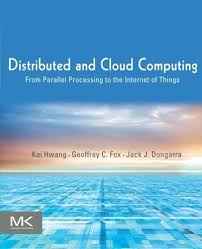Distributed and Cloud Computing: From Parallel Processing to the Internet of Things
Introduction
The evolution of computing has been marked by a relentless pursuit of efficiency and scalability. From early mainframes to personal computers and then to the interconnected world of the internet, computing power has grown exponentially. Distributed and cloud computing have played pivotal roles in this evolution, enabling the processing of massive datasets, the development of complex applications, and the emergence of new technologies like the Internet of Things (IoT).
Parallel Processing: The Foundation of Distributed Computing
Parallel processing, the simultaneous execution of multiple tasks, laid the groundwork for distributed computing. By dividing a problem into smaller, independent subproblems that can be solved concurrently, parallel processing significantly accelerates computation. Early examples of parallel processing include supercomputers and specialized hardware for scientific simulations.
Distributed Systems: A Network of Computers
Distributed systems extend the concept of parallel processing by distributing tasks across multiple interconnected computers. These systems can be homogeneous or heterogeneous, with varying levels of autonomy and coordination. Distributed computing has become essential for handling large-scale data processing, web applications, and real-time analytics.
Cloud Computing: A Paradigm Shift
Cloud computing represents a paradigm shift in how computing resources are provisioned and consumed. Instead of owning and managing physical infrastructure, organizations can access computing resources on demand from a remote data center over the internet. This model offers several benefits, including scalability, flexibility, and cost-effectiveness.
Types of Cloud Computing:
- Infrastructure as a Service (IaaS): Provides fundamental computing resources like servers, storage, and networking.
- Platform as a Service (PaaS): Offers a development environment for building and deploying applications.
- Software as a Service (SaaS): Delivers applications as a service over the internet.
The Internet of Things and Distributed Computing
The Internet of Things (IoT) has revolutionized how we interact with the physical world. Billions of interconnected devices generate vast amounts of data that need to be processed and analyzed in real-time. Distributed computing and cloud computing are essential for handling the scale and complexity of IoT data.
Key Challenges and Opportunities:
- Data Management: IoT devices generate massive amounts of data that need to be stored, processed, and analyzed efficiently.
- Scalability: IoT applications must be able to scale to accommodate the growing number of devices and data volumes.
- Security: Protecting IoT devices and data from cyber threats is a critical challenge.
- Real-time Processing: Many IoT applications require real-time processing of data, which can be challenging with large-scale distributed systems.
Conclusion
Distributed and cloud computing have played a crucial role in the evolution of computing, enabling the development of powerful and scalable applications. As the Internet of Things continues to grow, these technologies will become even more essential for managing the vast amounts of data generated by interconnected devices. By addressing the challenges and leveraging the opportunities presented by distributed and cloud computing, we can unlock the full potential of the IoT and create a more connected and intelligent world.
References
- Tanenbaum, A. S., & Steen, M. (2007). Distributed systems: Principles and paradigms. Prentice Hall.
- Buyya, R., & Venugopal, S. (2010). Cloud computing: Principles and paradigms. Wiley-IEEE Press.
- Lin, C.-Y., & Lin, C.-W. (2015). Internet of Things: Architectures, protocols, and applications. John Wiley & Sons.
- Armbrust, M., Fox, A., Griffith, R., Katz, A., Konwinski, A., Lee, G., ... & Zaharia, M. (2010). Above the clouds: Lessons from Berkeley's experience in building a distributed system. Communications of the ACM, 53(3), 50-57.
- Goh, K. C., & Tan, Y. (2015). Cloud computing: A survey of technologies, systems, and applications. Journal of Systems and Software, 101, 72-95.
Note: This is a general overview of distributed and cloud computing with a focus on their application to the Internet of Things. For a more in-depth analysis, consider exploring specific case studies, technical papers, and industry reports related to these topics. Contact ias-research.com



